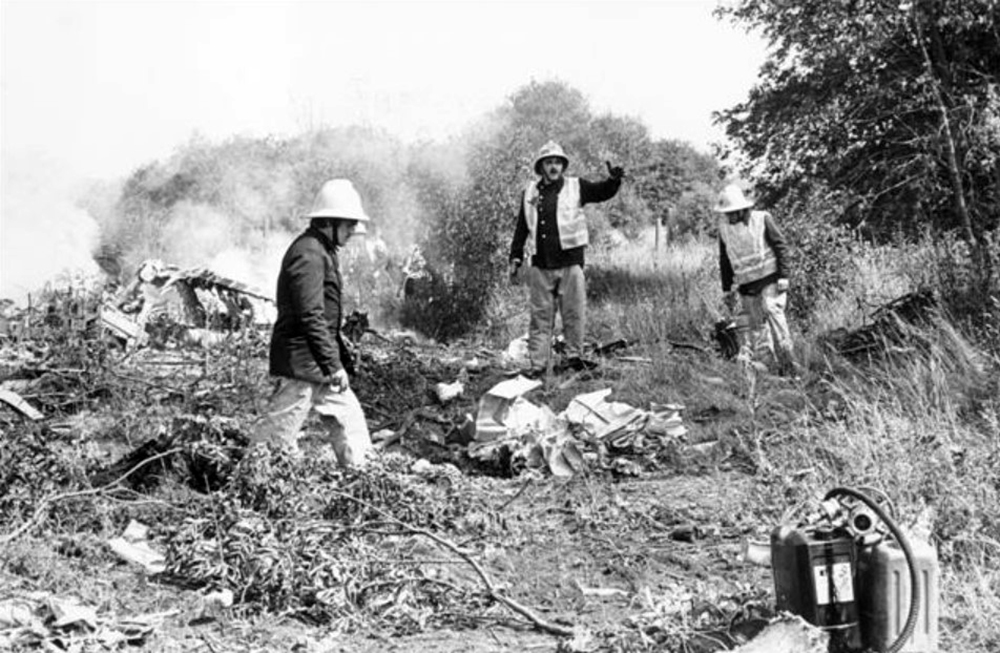Zone
Crash of a Partenavia P.68TC in Gratwich
Date & Time:
Jun 3, 2001 at 1317 LT
Registration:
N33PV
Survivors:
Yes
Schedule:
Meaux – Liverpool – Henstridge
MSN:
347-33/TC
YOM:
1984
Crew on board:
1
Crew fatalities:
Pax on board:
4
Pax fatalities:
Other fatalities:
Total fatalities:
0
Captain / Total hours on type:
159.00
Circumstances:
The five occupants left Guernsey on 24 May and flew direct to Vannes in Normandy. The pilot routinely cruised at power settings of 2,350 RPM and 32 inches Manifold Pressure giving a speed of 140 KIAS. The flight to Vannes would have taken some 44 minutes in still air and records recovered from the aircraft indicated that it lasted 50 minutes. The aircraft was parked at Vannes for a few days on level ground. No fuel was uplifted before leaving Vannes and the aircraft departed on 31 May to fly to Meaux on the eastern outskirts of Paris. The records indicate that this 254 nm flight lasted 2 hours 5 minutes. The aircraft was parked on level ground at Meaux for a few days. On the morning of 3 June, the day of the accident, the owner taxied the aircraft to the aero club's fuel pumps at Meaux to have the fuel tanks replenished. She believes she may have dipped the tanks before refuelling began but she could not remember the resultant quantities. Whilst the aircraft was being refuelled, the pilot left its vicinity and went into the club premises to file her flight plan, check the weather and pay the fuel and airport charges. The fuel receipt was completed for 157 litres of 100LL AVGAS When the refuelling operator had finished filling the left wing tank he moved towards the right wing but received instructions from a member of the pilot's family that there was no need to refuel the right wing tank. A different member of the family stated, soon after the accident, that this was because the right fuel tank gauge was indicating 2/3 full. Shortly afterwards the pilot returned to the aircraft. She did not dip the tanks after refuelling. On leaving Meaux the pilot recalled that the right tank gauge indicated "almost full" whilst the left tank gauge indicated "a bit less". Her intentions were to fly from Meaux to the airstrip near Liverpool where three persons would disembark and she would then return to Henstridge. There were no refuelling facilities at the Liverpool landing strip and she planned to complete both legs without refuelling. She did so on the basis that the aircraft's endurance on full tanks was about 6 hours and she planned to be airborne for less than this. (The still air flight time was later calculated to be 41/4 hours and the prevailing winds were westerly). The aircraft departed Meaux at 1020 hrs and was flown uneventfully and in VMC conditions towards Liverpool via Compiegne, Abbeville, Lydd, Clacton and Cambridge. The autopilot was disengaged throughout the flight and the pilot could not recall using abnormal amounts of rudder or roll control (the aircraft had no aileron trim). Specifically, she was not aware of any marked imbalance in roll or any abnormal fuel gauge readings. At 1246 hrs when the aircraft was at 3,500 feet altitude and south of Leicester the pilot contacted East Midlands Approach and requested a Flight Information Service en-route to the Lichfield NDB. At 1312 hrs she transmitted a Mayday message on the East Midlands frequency stating that she had "lost" the right engine. The controller responded with information that the nearest airfield was Tatenhill in her six o'clock at about 10 miles range. The pilot turned to the right and took-up a south-westerly track towards Tatenhill. About one minute later, when asked to confirm her altitude, the pilot reported "I HAVE NO ENGINES NOW" followed by "TO DO A FORCED LANDING PAPA VICTOR, OH NO ITS GOING AGAIN". The controller continued providing vectors to Tatenhill whilst his assistant briefed Tatenhill's radio operator and West Drayton's Distress and Diversion cell on the developing situation. At 1315:40 hrs, when the aircraft was 10 miles northwest of Tatenhill at 2,800 feet altitude, the pilot reported "NO ENGINES ... W'ELL HAVE TO FIND A FIELD". The last recorded RTF message from the pilot at 1316:50 hrs was "I HAVE A HI... HILL ERM A FIELD ON A". The pilot was heavily sedated in hospital for some time after the accident and she could remember little of the final stages of the glide approach. The aircraft passed low beside a farmhouse and crash-landed in a field of soft earth with a significant up-slope in the landing direction.
Probable cause:
The accident arose partly through significantly asymmetric fuel quantities in the two wing tanks before the aircraft took off. The pilot was critically injured in the accident and heavily sedated for some time afterwards, which may explain why she could remember few details of the refuelling process at Meaux. Because she left the aircraft during the refuelling operation, she may have been unaware that only the left tank had been replenished. A representative of the flying club at Meaux stated that the club accepted payment for fuel only by French cheque or in cash, and that the pilot paid in cash and appeared to spend all her remaining French currency. However, after paying all the charges at Meaux, the pilot's family had several hundred Francs and some French currency cheques with them and consequently, the inability to pay for more fuel was not an issue. Moreover, no explanation was offered as to how a pilot could pay for 157 litres of fuel before it had been delivered without the refueller receiving instructions to deliver that quantity. The pilot could not remember her instructions to the refueller but her instructions to a family member who remained with the aircraft were that if the left tank was between one half and two thirds full, the right tank was to be filled to within two inches of the filler neck. The pilot now believes that there may have been some confusion between the identification of 'left' and 'right' tanks. Nevertheless, if the fuel tank quantities were similar before the refuelling, it is surprising that the pilot was unaware of any tendency to roll towards the heavier left wing after take-off. Moreover, it is also surprising that the fuel gauges, which worked correctly when tested, did not give early warning of low fuel contents in one tank. The loss of power from the right engine was consistent with exhaustion of the fuel supply from the right wing tank which had not been replenished since the aircraft left Guernsey. Had it not been for the mis-positioned fuel selector valve, the pilot should have had ample fuel to land safely at Tatenhill on one engine, a procedure which she had been adequately trained to accomplish. This option was thwarted when air from the empty right tank reached the left engine. At that moment the left engine began to run intermittently and ultimately the pilot had no option but to execute a forced landing. The pilot chose a brown field in which to land because she feared the aircraft might turn over if she landed in a field of standing crop. The upward slope of the field, the soft earth and the 'clean' wing configuration all contributed to a very heavy forced landing. The pilot did not remember feathering the right propeller (it had been feathered) and she could not explain why she had touched down with the flaps retracted. Nevertheless, the tone of the pilot's voice on the radio suggested that she was coping well with an unpleasant and unforeseen situation. The East Midlands air traffic controller's performance was exemplary.
Final Report:

Crash of a Piper PA-31-350 Navajo Chieftain off Liverpool: 5 killed
Date & Time:
Jun 14, 2000 at 0950 LT
Registration:
G-BMBC
Survivors:
No
Schedule:
Douglas - Liverpool
MSN:
31-7952172
YOM:
1979
Crew on board:
1
Crew fatalities:
Pax on board:
4
Pax fatalities:
Other fatalities:
Total fatalities:
5
Circumstances:
The aircraft, operated by an Air Operator's Certificate holder, was engaged on an air ambulance operation from Ronaldsway in the Isle of Man to Liverpool. Having flown under VFR on a direct track to the Seaforth dock area of Liverpool the pilot flew by visual reference along the northern coast of the Mersey Estuary to carry out a visual approach to Runway 09 at Liverpool. During the turn on to the final approach, when approximately 0.8 nm from the threshold and 0.38 nm south of the extended centreline, the aircraft flew into the sea and disappeared. All five occupants were killed.
Probable cause:
The investigation concluded that the pilot lost control of the aircraft at a late stage of the approach due either to disorientation, distraction, incapacitation, or a combination of these conditions.
Final Report:
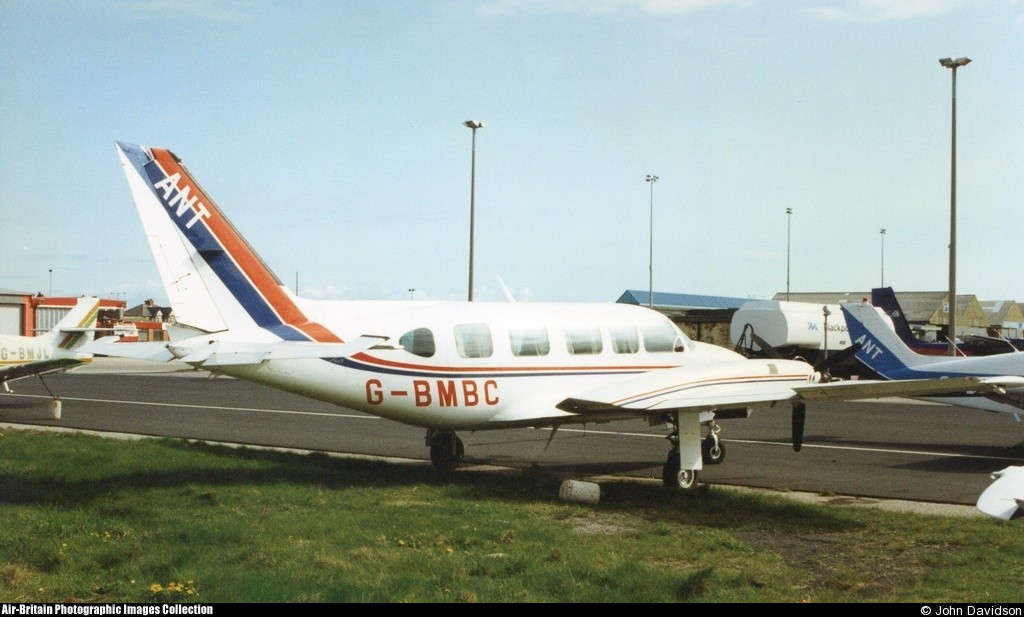
Crash of a Short 330-300 in Liverpool
Date & Time:
Jan 3, 1997 at 0042 LT
Registration:
G-ZAPC
Survivors:
Yes
Schedule:
Exeter - East Midlands
MSN:
3023
YOM:
1978
Crew on board:
2
Crew fatalities:
Pax on board:
1
Pax fatalities:
Other fatalities:
Total fatalities:
0
Captain / Total hours on type:
900.00
Circumstances:
The aircraft departed Exeter at 2237 hrs where the weather was fair with scattered cloud at 1500 feet. After climbing uneventfully through cloud to FL 90 the aircraft cruisedin clear, smooth air. In the cruise the co-pilot noticed that his vertical speed indicator was displaying a slight rate of climb although the aircraft was in level flight but this and a spurious hydraulic warning were the only anomalies. As the aircraft approached East Midlands airport the runway visual range there was below the approach minima and several aircraft were holding awaiting an improvement in the visibility. G-ZAPC descended to 2,500 ft and held in clear air over the Lichfield NDB for about 45 minutes until the fuel state dictated a diversion to Liverpool. On diversion the aircraft was initially cleared direct to the Whitegate NDB and then Wallasey VOR at FL 40. At this level the crew could see ground features in good visibility until they entered cloudas they descended through 3,500 feet whilst being radar vectored for an approach to Liverpool Airport. The cloud was stratiform in character and did not appear to contain precipitation or significant turbulence. At Liverpool airport the cloud base was 6/8at 1,100 feet, the visibility 12 km, the air temperature +1°Cand the surface wind was 060°/8 kt. There is an ILS localiser on Runway 09 but no glidepath transmitter so a LOC DME approach is normally flown. Although the DME antenna is mid-way along the runway, the DMErange is set to read zero at the runway displaced threshold. The pilot flies the localiser in azimuth and adjusts his height according to his pressure altimeter; the 3° glidepath commences at 1,610 feet QNH from 5 nm DME with check heights at 4, 3, 2 and 1 nm DME. On the north side of the runway 329 metres from the threshold there are 4 PAPI (Precision Approach Path Indicator)lights which are set to a glidepath of 3°. During the approach to Runway 09 at Liverpool all the anti-icing services were switched on and operating except for the wing de-icing boots which, having seen no ice on the wings,the commander decided not to employ, and the ice detector which he considered unreliable. The approach proceeded normally andthe aircraft descended out of cloud at about 1,100 feet having been in cloud for about 10 minutes. When the commander viewed the PAPIs at 1 DME"all four lights had a pink tinge". Thinking he might be slightly low relative to the approach glidepath, he asked the co-pilot to specify the correct height at 1 DME which was 410feet. At the time the commander's pressure altimeter, which was set to the QNH of 1019 mb, indicated that the aircraft was slightly high and so he made a small correction to the flight path which resulted in three red PAPI lights and one white light. The commander also decided to touch down slightly beyond the runway identifier numbers which are a few metres beyond the 'piano keys' that identify the threshold. The aircraft was cleared to land with a wind of "Easterly at 10 kt" and on short finals the commander asked for full flap. He then allowed the speed to bleed back from the approach speed of between 110 and 120 KIAS towards the threshold speed of 90 KIAS without moving the throttles from their approach power setting. According to both crew members and the passenger who was seated in the 'jump seat', the aircraft crossed over the end of runway at between 88 and 90 KIAS. Some 20 to 30 feet above the runway the commander noticed that the flight controls felt 'sloppy' as if the aircraft's speed was unusually low but there was no hint of a stall warning or stick shaker activation. At much the same time all three persons on board felt the aircraft sink rapidly; the commander pulled back on the control column but he was unable to arrest the high rate of descent and the aircraft struck the runway very hard. The right wing dropped as the right main gear collapsed and the aircraft veered to the right off the runway onto the grass. The ground was frozen hard and the aircraft came to a halt without incurring further significant damage. The crew informed ATC that they were unhurt before securing the aircraft whilst ATC activated the airport's emergency services. On leaving the aircraft the commander inspected the wings for ice accretion. He noticed a thin layer of clear,watery ice along the leading edges across the pneumatic de-icing boots from top to bottom. The ice layer could be wiped off with one finger and was no more than one eight of an inch thick. Throughout the flight there had been no visible signs of ice accretion on the wings or the windscreen wiper. Consequently, the commander had not increased the threshold speed to compensate for ice accretion.
Probable cause:
From the available evidence it appears probable that the aircraft developed a high rate of descent from a height of 20 to 30 feet above the runway without producing a stall warning. The following causal factors were considered: wind shear; wake turbulence; pitot-static system errors; low airspeed during the final stages of the approach; and significant ice accretion on the airframe. Wind shear was discounted because numerous wind readings showed the normal slight variation in direction but a consistent wind speed, and there were no obstacles such as hangars upwind of the threshold. Wake turbulence was discounted because the preceding aircraft had landed 19 minutes before GZAPC. The pitot-static systems were checked to be leak free and all relevant instruments were shown to be accurate. It was also established that all pitot head, static plate and stall warning heaters were serviceable. A favourable comparison of the approach profile with those of the preceding four aircraft indicated that there was no evidence of static pressure errors. The calculated airspeeds from radar were consistent with thespeeds reported by the crew for the initial approach suggesting that itot errors were not significant. Thus, unless icing, for example, had affected these systems at a late stage of the approach,erroneous instrument readings were considered unlikely. The final approach was flown at about the correct airspeed but there was a trend within the radar data,for the last mile of the approach, for the airspeed to reduce towards the stalling speed. However the data was too coarse to provide exact speeds and the stall warning system did not activate. The likelihood of significant airframe icing was discounted for several reasons including: the commander's statement; photographs taken of the aircraft shortly after the accident which showed no signs of significant ice accretion; no lumps of ice were found on the runway; and the airframe was icefree when examined by the AAIB despite overnight sub-zero temperatures. There was, therefore, no positive conclusion as to the cause and it remains a possibility that some or all of the above factors, to a small extent, may have combined to produce a high rate of descent while the aircraft was some 20to 30 feet above the runway.
Final Report:
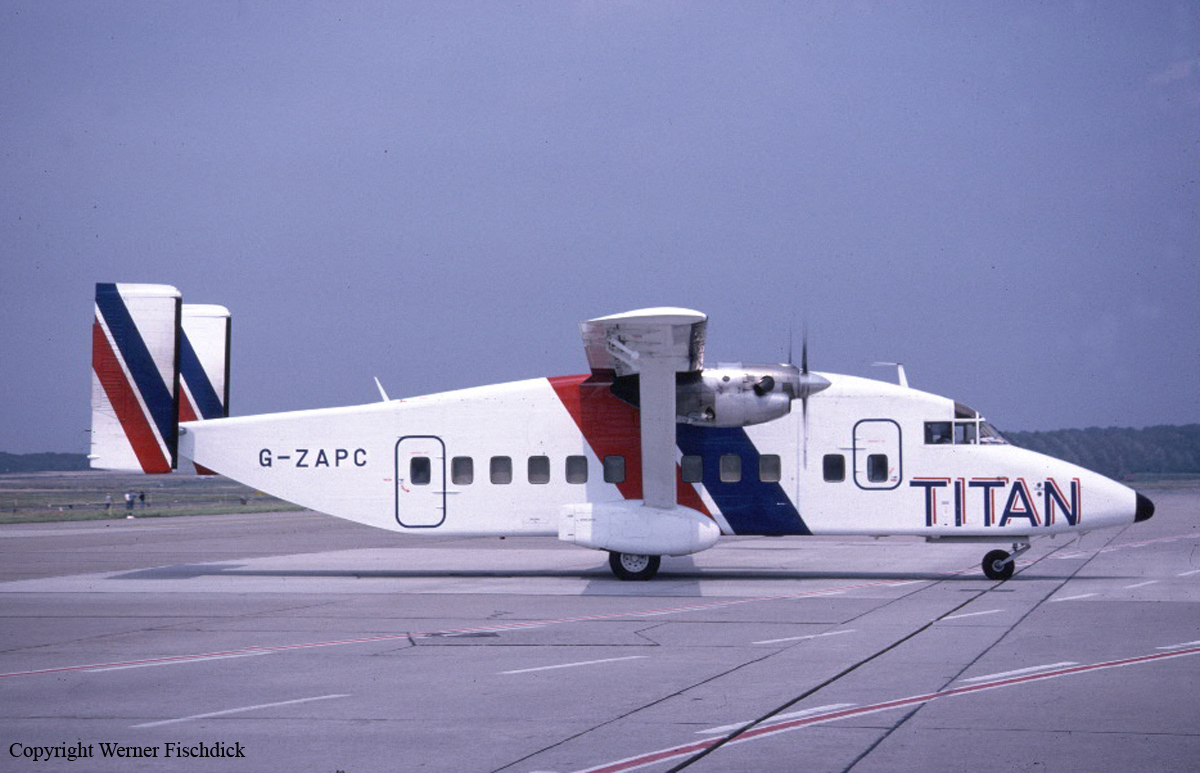
Crash of a Max Holste M.H. 1521M Broussard in Barton
Date & Time:
Jun 7, 1988 at 1730 LT
Registration:
G-BKPU
Survivors:
Yes
Schedule:
Liverpool - Barton
MSN:
217
YOM:
1959
Crew on board:
2
Crew fatalities:
Pax on board:
0
Pax fatalities:
Other fatalities:
Total fatalities:
0
Captain / Total hours on type:
33.00
Circumstances:
The purpose of the flight was to familiarise a prospective purchaser with the handling of the aircraft. The captain who was the owner of the aircraft and held a Private Pilot's Licence with an Instructor's Rating, occupied the right-hand seat and the other pilot, who also held a Private Pilot's Licence, occupied the left-hand seat. The weather was fine with a light north-easterly wind. Before takeoff, some oil was noticed on the windscreen but neither the pilot considered that it warranted any action. Following an uneventful takeoff during which the engine and propeller functioned normally, some minutes were spent in the local area before it was decided to visit Barton. Liverpool ATC was informed and G-PU set course to Barton. On approaching Barton, some 20 minutes into the flight, an adjustment to the engine controls resulted in a significant increase in the amount of oil on the windscreen. The captain was unconcerned but the pilot kin the left-hand seat thought that he might have problems with visibility for landing. Shortly after this, Barton radio passed the airfield information which gave the landing runway as 09 with a left hand circuit. When crosswind at a height estimated by ground observers to be about 500 feet agl, the captain selected the propeller control to fully fine as part of his pre-landing checks. Coincident with this action, the windscreen and side windows became covered with a large quantity of oil which totally obscured both pilots view of the outside world. The operation manual recommends that under these circumstances the propeller be selected to coarse pitch to reduce the flow of oil. The captain did not execute this procedure because he considered that configuring the aircraft for an immediate landing in fine pitch was his priority in the prevailing circumstances. Both pilots opened their direct vision panels which enabled them to see the ground abeam the aircraft but not forward vision was possible because of the large amount of smoke that was ny now streaming back from the engine. The presence of smoke led the crew to believe that the aircraft might be on fire. Since the pilot in the left-hand seat could see towards the runway, it was decided that he should retain control and attempt to position the aircraft for a landing on runway 09. The captain made a radio call requesting priority in the circuit but the radio operator in the control tower received only carrier wave and assumed the call to be the captain's downwind report and replied accordingly. The aircraft's permanent radios not functioning and a hand held transceiver was being used by the pilot. Previous radio communications had been satisfactory. When it was judged that G-PU was at the end of the downwind leg, a turn onto base leg was initiated and a descent commenced. After turning towards the estimated position of the runway 09 threshold, the captain realised that he was high and selected full flap. It then became apparent to him that not only was the aircraft too high but that it had also flown through the runway centerline and he judged that, because of the presence of houses in the over-run are of runway 09, a safe landing could not be made. He therefore elected to go-around and increased power. The engine responded normally but the aircraft failed to either climb or accelerate. G-PU was now at a height estimated to be between 200 and 300 feet agl and the captain decided to retain full flap for a further circuit. During the subsequent left turn and downwind leg the aircraft as observed to be steadily losing height and the radio operator in the control tower alerted the emergency services in anticipation of a crash. G-PU continued its turn towards the airfield at a very low altitude but the crew did not have enough visual reference to determine their position. When it became apparent to the handling pilot that he was very close to the ground, he leveled the wings and waited for the inevitable impact. G-PU struck a stand of small trees and on the top of the M62 motorway embankment while on a heading of 180°, it then struck a motorway sign and several vehicles before coming to rest on the hard shoulder on a westerly heading. Neither pilot was aware that they had landed on the motorway until they vacated the aircraft. Neither pilot was injured but a car passenger sustained serious injuries.
Probable cause:
The most probable sequence, therefore, leading to the anomalies found in the propeller hub is, firstly, the break-up of the outboard leather seal, secondly the displacement of the inboard gasket by oil pressure following the loss of clamping loads and, coincident with the disruption of the gaskets, the damaging and ejection of the phenolic bush. The rest of the propeller pitch change system was examined for anything which could have caused excessive or asymmetric loading on the actuating cylinder but none was found.
Final Report:




Crash of a Britten-Norman BN-2A Trislander III-1 in Hale
Date & Time:
Feb 9, 1987 at 0906 LT
Registration:
G-OCME
Survivors:
Yes
Schedule:
Liverpool – Douglas
MSN:
262
YOM:
1971
Crew on board:
1
Crew fatalities:
Pax on board:
0
Pax fatalities:
Other fatalities:
Total fatalities:
0
Captain / Total hours on type:
130.00
Circumstances:
The aircraft was engaged upon a contracted freight (mail) flight, from Liverpool to the Isle of Man, U.K, and was planned to depart Liverpool at 07:29 hrs. Prior to departure the fuel gauges indicated between 80 and 85 Imperial Gallons (IG). As the required fuel for the planned flight was 82 IG, the aircraft was not refuelled. After an uneventful flight, made a radar approach to runway 09 at the Ronaldsway-Isle of Man Airport. Having failed to see the runway by decision height, 460 feet, the commander carried out a go-around procedure and returned to the VOR approach beacon before departing on course to the selected diversion. Considering the wind, the pilot made a return to Liverpool (86 nm) instead of the planned diversion airfield of to Valley RAF Station (51 nm). When abeam the Wallasey VOR, 15 nm from Liverpool airport, the aircraft was positioned, by radar, downwind for an approach to runway 27. As the aircraft turned onto the final approach path, the right engine lost power but. The pilot did not feather the propeller, in the belief that the engine was still producing some power. As the rate of descent increased, he applied full throttle to all three engines but, despite this and the selection of the speed necessary to achieve the optimum climb rate, the aircraft continued to descend at a rate which made a landing considerably short of the runway inevitable. The commander made a truncated MAYDAY call and firmly placed the aircraft in a convenient open field below and slightly to the north of the normal approach path. The accident site was a low lying field of winter crop that was subject to tidal flooding. Approximately halfway across the field there was a 2.4 metre wide by 2.4 metre deep drainage ditch, which ran at 45 degrees to the direction of travel of the aircraft. The initial touchdown was some 76 metres to the east of the ditch, on a heading of 270 degrees magnetic. Just after initial touchdown, the right main landing gear failed rearwards and the aircraft continued on its nose and left landing gear, until a collision with an embankment bordering the ditch caused the remaining landing gears to collapse. The aircraft finally came to rest with its fuselage in the drainage ditch, supported by the wings which were resting on the embankments either side.
Probable cause:
Examination of the flight profile, and associated flight times, showed that all the fuel aboard the aircraft would have been consumed and, therefore, the likely reason for the lack of response to full throttle, when the right engine failed, was a previous or simultaneous failure of the centre engine due to fuel starvation.
Final Report:




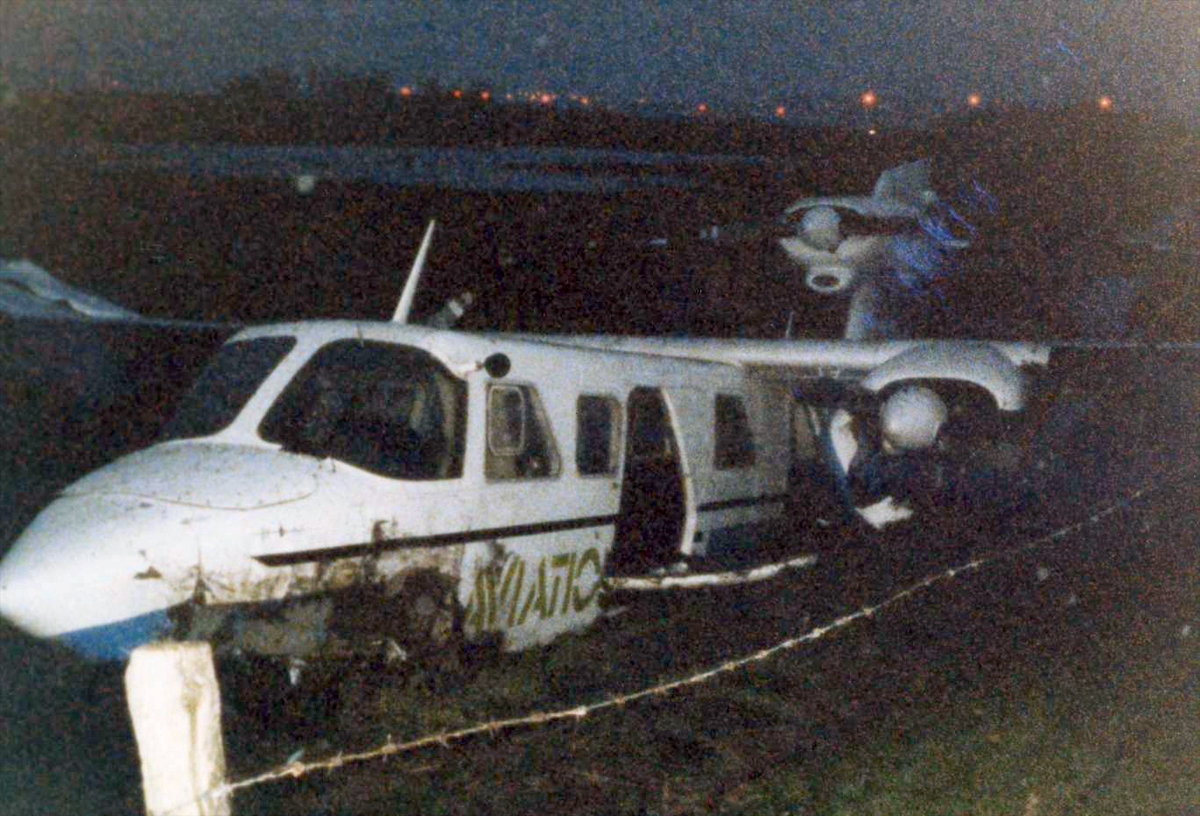
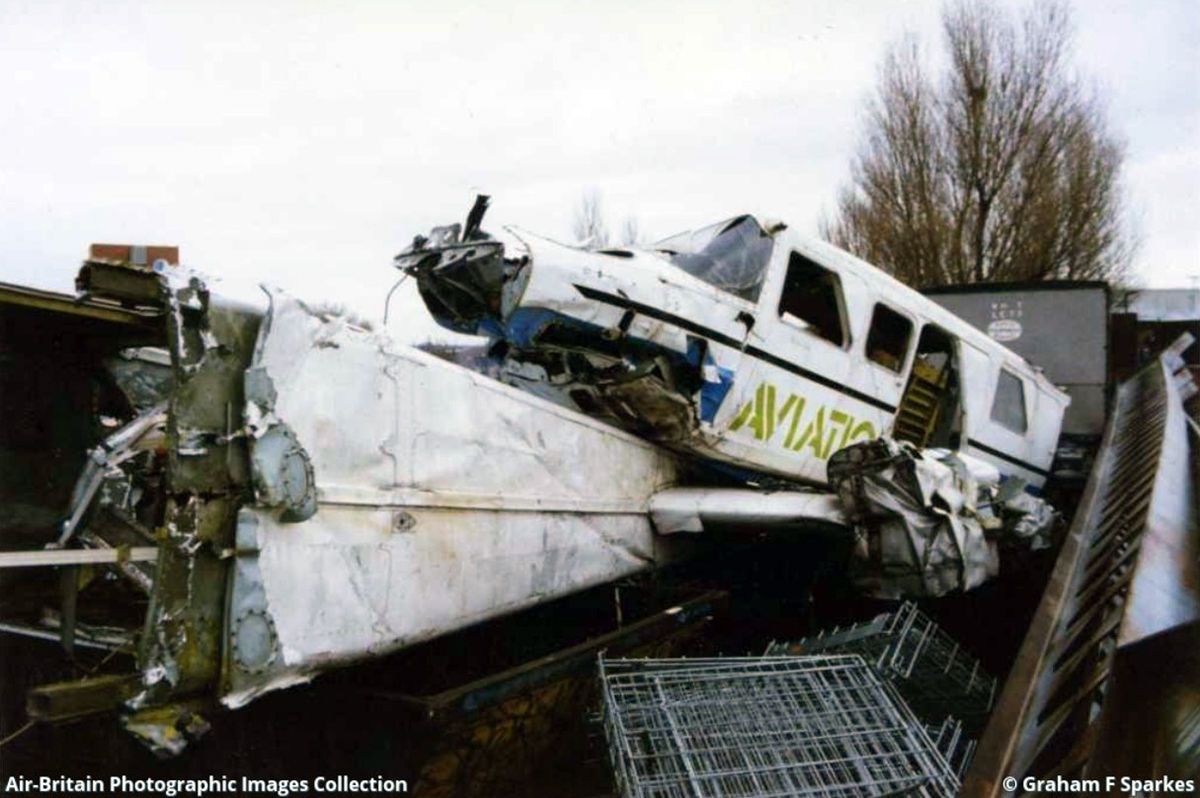
Crash of a Vickers 668 Varsity T.1 in Marchington: 11 killed
Date & Time:
Aug 18, 1984 at 1008 LT
Registration:
G-BDFT
Survivors:
Yes
Schedule:
East Midlands - Liverpool
MSN:
620
YOM:
1952
Crew on board:
2
Crew fatalities:
Pax on board:
12
Pax fatalities:
Other fatalities:
Total fatalities:
11
Captain / Total hours on type:
63.00
Copilot / Total hours on type:
21
Aircraft flight hours:
6682
Circumstances:
The Varsity aircraft was a twin engined training aircraft used by the Royal Air Force until 1974 when it was sold into private ownership. It was currently owned and operated by an aircraft preservation group who maintained the aircraft to its service specification. For this reason it carried the military designation "WJ897" on the fuselage and wings although it was registered as G-BDFT. The aircraft had been granted a Permit to Fly and was restricted to display and demonstration flying and the practising for such displays. Thirteen members of the society had boarded the aircraft earlier that morning at RAF Syerston in Nottinghamshire, where the aircraft was hangared, for the short flight to East Midlands Airport (EMA). This flight was uneventful and, after landing, the aircraft was refuelled with 436 imperial gallons of aviation gasoline (Avgas 100 LL) increasing the total fuel on board to 510 imp gals. It was intended to fly to Liverpool Airport (LPL) to take part in an air display that afternoon. It was arranged that aerial photographs of the Varsity would be taken during the flight to Liverpool using a Cessna 180. This aircraft was to rendezvous with the Varsity at 3000 feet amsl in the area of Blithfield Reservoir some 20 miles to the west of East Midlands Airport. The Varsity engines were normally started using a ground electrical supply. On this occasion, the left engine was reluctant to start and after it initially fired, it faltered and stopped, emitting smoke from the exhaust. For fear of exhausting the batteries with repeated attempts to start, the right engine was started first. The left engine was then motored over before another start attempt was made, this time successfully. The passengers on the Varsity were told that the left engine had been over primed on the first attempt to start. The Varsity took off at 09:32 and the approach controller at East Midlands Airport provided bearing and range information to the Varsity pilot to help him locate the Cessna 180 and, at 09:47 hrs, both aircraft changed to a discrete radio frequency. The Varsity was then flown in formation on the right hand side of the Cessna in a series of wide orbits of the Blithfield Reservoir. During this time, the left engine of the Varsity was seen to emit occasional puffs of smoke accompanied by loud bangs. When the photographer requested that the Varsity climb slightly above the Cessna and lower its undercarriage, the Varsity pilot reported that he was having trouble with the right engine. The Cessna pilot replied that it looked to him as if the problem was in fact with the left engine, as he could see puffs of smoke as if the engine were running too rich. When the Varsity pilot replied that it might be engine icing, the Cessna pilot noted that his intake temperature was indicating in the range where there was no risk of intake icing on his engine. The undercarriage of the Varsity was lowered briefly before being retracted again with the pilot's comment that he "could not accept the drag and might have to abort the photography". Towards the end of the photographic flying, the right engine started to backfire as well. At 10:05, the Varsity pilot called East Midlands Airport on the approach frequency requesting a direct return to the airport because he had some engine problems and might have to declare an emergency. In reply the approach controller passed the Varsity a course to steer to East Midlands and asked whether the Varsity could maintain height. The pilot answered that "at the present we are able to but it's with some difficulty". The Varsity steadily losing height and, at 10:07, the pilot informed the controller that the left engine of the Varsity had stopped. Thirty seconds later the Varsity co-pilot radioed "we're going to have to put it down in the nearest field, we're down to 400 feet and losing power on both engines so we are going into the...". The undercarriage of the Varsity was lowered and, at a very low height, the left wing was then seen to drop and the aircraft rolled over, the nose dropped and it crashed inverted. Just before impact the left mainplane severed 11,000 volt electricity supply wires. As the aircraft broke-up on impact, the rear part of the fuselage together with the empennage fell into a drainage ditch some 10 feet deep. The three survivors were seated in rearward facing seats in this part of the fuselage. Two were able to escape from the fuselage but the third was hampered by a broken leg and received severe burns when a wire fence prevented him from leaving the accident area.
Probable cause:
The accident was caused by a loss of control when the aircraft stalled at low altitude while the pilot was attempting a forced landing following a progressive loss of power on both engines. The loss of power on the left engine resulted from an excessive rich fuel/air mixture caused by a split diaphragm within the engine driven fuel pump. It was not possible to determine the cause of the loss of power on the right engine but it possibly resulted from ignition failure due to ignition coil breakdown at high engine boost settings.
Final Report:


